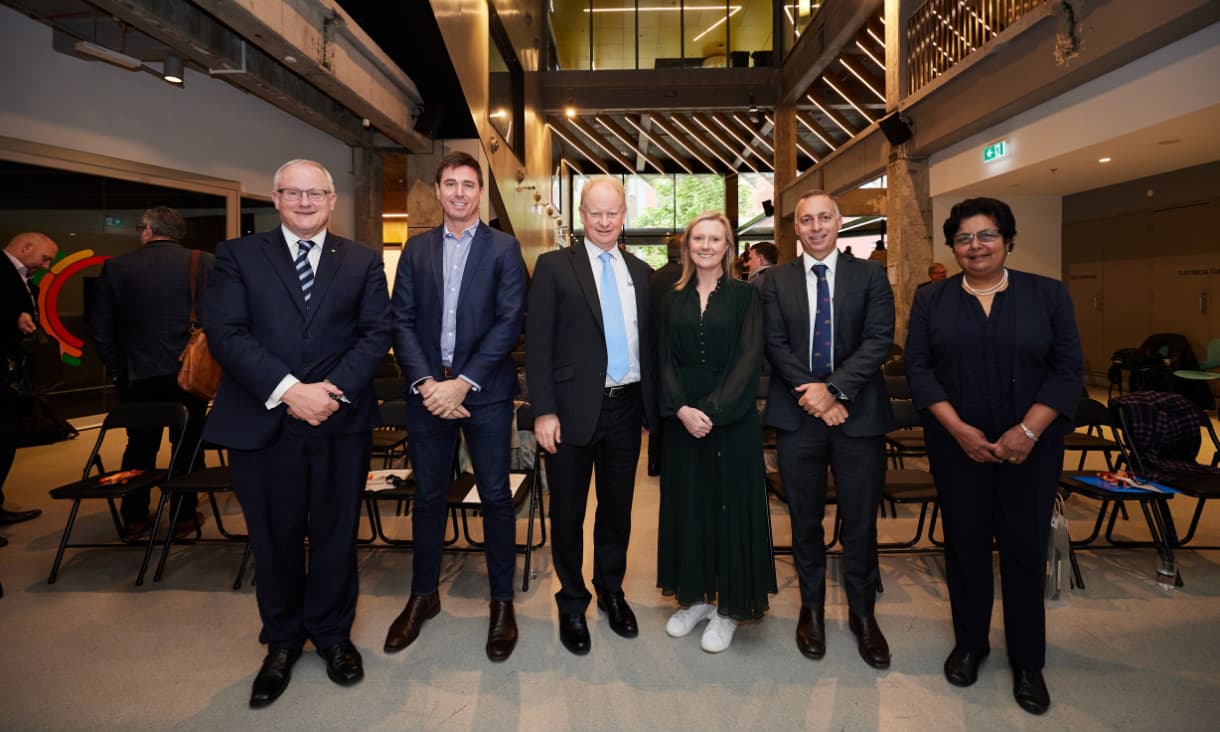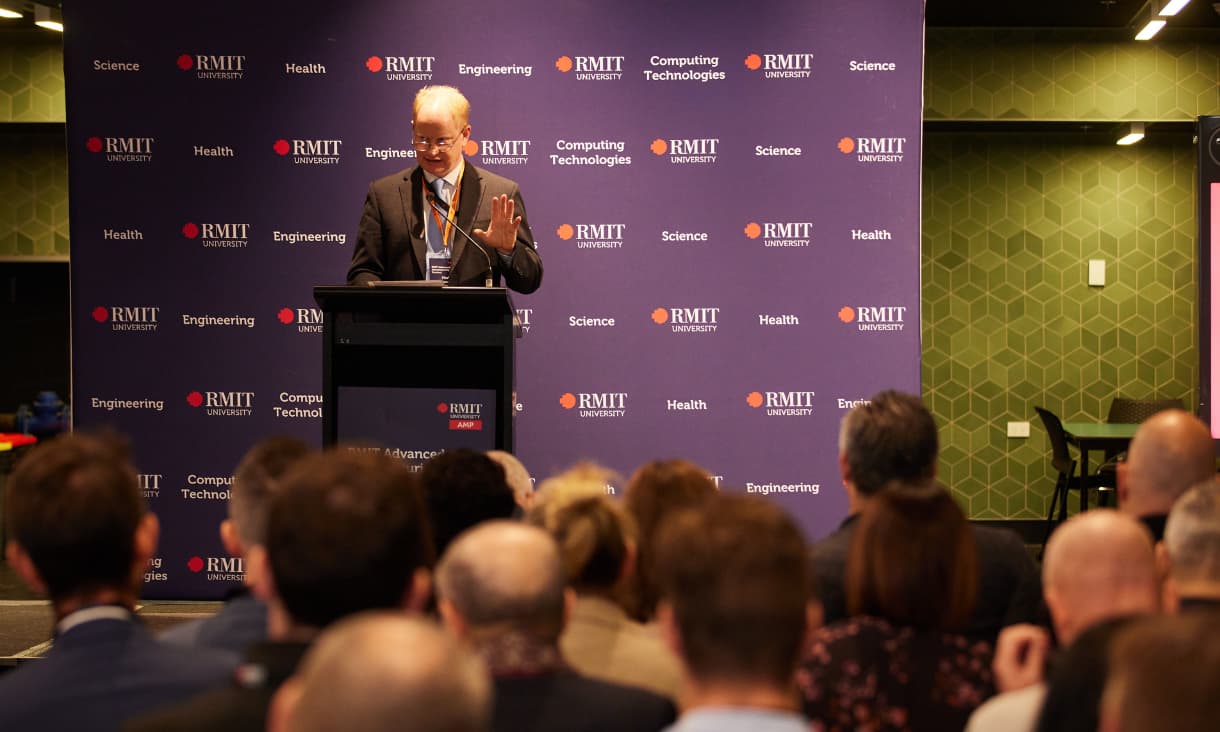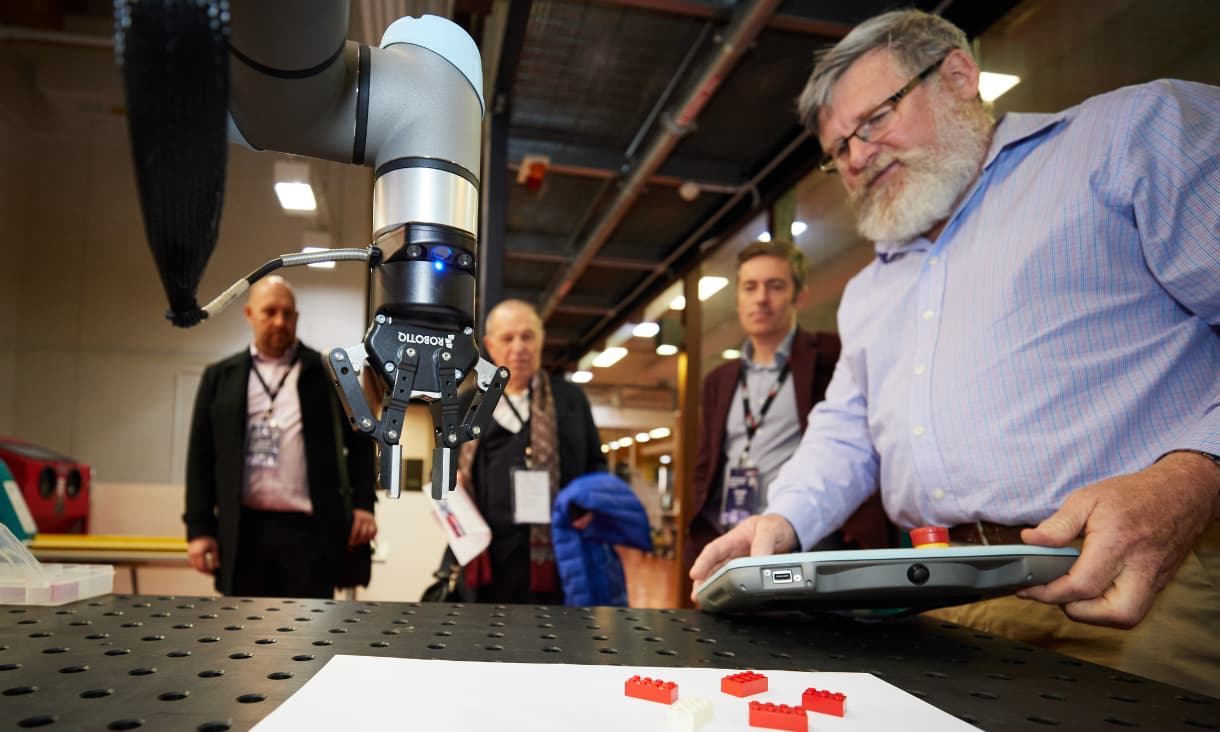RMIT's Advanced Manufacturing Precinct (AMP) is expanding to include 3 cutting-edge facilities that will deliver 21st century manufacturing.
The new, expanded precinct will remain based at the City Campus site and accommodate the original AMP now known as the Digital Manufacturing Facility (DMF), Micro-Nano Research Facility (MNRF) and Microscopy and Microanalysis Facility (RMMF).
The newly launched precinct will provide manufacturing and characterisation from nano-metre to metre length scales and digital automation technologies through collaboration with RMIT research centres and groups, while also pursuing further industry connections and projects.
 Speakers from the recent AMP launch event left to right: Professor Calum Drummond, Chris Shaw of Advanced Navigation, Mark Easton, Julia O'Callaghan of DefendTex, Darryl Kaufmann of Siemens, Professor Sujeeva Setunge. Source: Matt Houston
Speakers from the recent AMP launch event left to right: Professor Calum Drummond, Chris Shaw of Advanced Navigation, Mark Easton, Julia O'Callaghan of DefendTex, Darryl Kaufmann of Siemens, Professor Sujeeva Setunge. Source: Matt Houston
The expansion coincides with RMIT being awarded $1.2 million funding from the Australian Research Council (ARC) in the latest round of Linkage Infrastructure, Equipment and Facilities (LIEF) grants. This funding will support the installation of a next generation Free Float laser metal 3D printer as part of the DMF and a Dual-comb Hyperspectral Imaging Facility as part of the MNRF.
AMP Director Mark Easton says the precinct is now open and eager to collaborate with industry and research partners.
"We are here to provide cutting-edge facilities and capability for manufacturing research, teaching and workforce training. The AMP is a one stop shop for industry manufacturing engagement at RMIT," said Easton.
"The AMP is already known for our work developing large scale programs of impactful research through major strategic partnerships including collaborations with government and industry. This expansion lets us take this to the next level as we work to deliver the future of 21st century manufacturing."
 AMP Director Mark Easton encourages industry to collaborate with the newly expanded precinct. Source: Matt Houston
AMP Director Mark Easton encourages industry to collaborate with the newly expanded precinct. Source: Matt Houston
Professor Calum Drummond, Interim Deputy Vice-Chancellor STEM College, said that the expanded precinct further positions RMIT to work with industry.
"Working directly with and sharing knowledge with industry across multiple sectors is a part of RMIT's DNA. RMIT is a partner of choice with a unique value proposition across key sectors aligned with our values, strengths and reach. We lead in many areas, including emerging technologies, smart and sustainable cities, social innovation and of course, manufacturing."
Expanding capabilities
The 3 facilities now making up the AMP will facilitate further research capability.
- DMF's specialised equipment can assist companies to develop new conceptual products, perform design iterations or further develop existing products or enhance existing manufacturing processes.
- MNRF brings together diverse and high-quality multidisciplinary micro and nano technology research into a single facility - it has comprehensive facilities for the design, modelling, fabrication, packaging, and characterisation of micro and nano scale devices.
- RMMF provides advanced instrumentation, expertise and training that enables researchers to solve key problems in science, engineering and health.
 The new precinct will provide manufacturing and characterisation from nano-metre to metre length scales. Source: Matt Houston
The new precinct will provide manufacturing and characterisation from nano-metre to metre length scales. Source: Matt Houston
The AMP is a central component of the newly announced $72 million ARC Centre of Excellence in Optical Microcombs for Breakthrough Science (COMBS). The research centre will create ultra-precise measuring devices for next generation high-speed internet, better medical imaging technologies, environmental monitoring and even the search for life on other planets.
The AMP has been supported by the Victorian Government under the Victorian Higher Education State Investment Fund. It follows the launch of Victorian Government supported initiatives at RMIT including Space Industry Hub, RMIT AWS Cloud Supercomputing (RACE) and Digital Health Hub.






